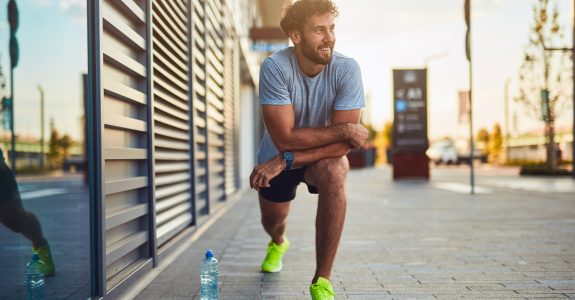
Jump To
Jump to a relevant FAQs section
Osteopathy
We want you to be completely comfortable using our service. If you still have any queries please contact us.
What is osteopathy?
A form of manual therapy that bases treatment around four basic principles that collectively state that the body functions as a whole and has the ability to self heal. Osteopaths use their indepth knowledge of anatomy to free areas of the body that are functionally related to certain body regions. Osteopaths use a range of techniques including soft tissue massage, stretching, joint articulation plus others. Home exercise prescription and body education is also central to osteopathic care.
Is osteopathy evidence based?
Some evidence exists to support the use of osteopathy in various presentations. Please visit Osteopathy Australia's Supporting Research Page for recent studies investigating the role of osteopathy for the treatment of various conditions.
What conditions to osteopaths provide treatment for?
Osteopaths provide treatment for many conditions across the lifespan. Some of the most common conditions presenting to Osteopaths include:
• Infants: feeding difficulty, pre-post tongue tie release, neck stiffness and head shape concerns, unsettledness, gross motor delay or asymmetry of movement, hip asymmetry or post bracing.
• Children: in toeing or out toeing, gross motor delay / coordination concerns, complaining of pain post fall, 'growing pains', musculoskeletal tension arising from oro-facial habits such prolonged dummy use, finger or thumb sucking or mouth breathing, injury recovery and physical conditioning around sport, scoliosis management.
• Adults: back pain, neck pain, headaches, postural concerns, sports injuries, lower limb & upper limb pain and more.
• Pregnancy: low back pain, pelvic pain, pubic symphysis pain, upper back and neck pain, headaches, maintenance of general health and postural balance through pregnancy and more.
• Elderly: maintenance of joint flexibility and postural balance, treatment of arthritic and degenerative related stiffness, promotion of healthy circulation and venous drainage and more.
What treatment techniques do osteopaths use?
Osteopaths use their hands and apply treatment to the physical body, using a wide range of techniques including soft tissue massage, stretching, joint articulation, some joint manipulation, and gentle balancing techniques known as biodynamic/cranial sacral osteopathy. Techniques used are patient and presentation specific, and selected to ensure patient comfort and safety.
How safe is osteopathy?
All forms of manual therapy carry and element of risk. That said however, osteopathy has one of the best safety records of any medially related profession. Our osteopaths use the most subtle techniques when caring for infants, children and pregnant women.
What to expect as a patient:
Your osteopath will ask about your problem and symptoms. This will include your medical history, any medications you are taking or other factors that may not appear to be directly related to your problem.
Your osteopath will advise you if they can treat you or you need to be referred.
Your osteopath will conduct an examination and clinical tests. These include diagnostic, orthopaedic or neurological tests, postural assessments and activities or exercises, which determine how best to manage your condition.
The examination may include passive and active movements. The osteopath may lift your arms or legs and you may be asked to bend over or stand in your underwear. Be sure to wear comfortable, flexible and appropriate underwear.
Osteopathy takes a whole of body approach to treatment. Your osteopath may look at the area that is troubling you as well as other parts of your body. For example if you have a sore knee, your osteopath may also look at your ankle, pelvis and back.
Your osteopath may also provide education and advice to help you manage your condition between treatments. This may include giving you exercises to do at home or work.
What to expect at your child’s initial osteopathic/movement therapy appointment:
Firstly, the osteopath will ask some questions to identify any factors that may contribute to presenting symptoms and functional concerns expressed by the child’s caregiver. She will then observe the child's whole body posture. Assessment may include the osteopath gentle moving the child’s body, and depending on the child's age and ability, asking the child to actively move their body in certain ways. Any imbalances or restrictions noted are then related to the child’s current function. The goal of osteopathic treatment and exercise prescription is to restore balance in the child’s body, to improve all areas of function.
Do patients need a GP referral?
No. Osteopaths are trained as primary health practitioners. Patients can make an appointment without a referral. If you have been diagnosed with a chronic medical condition and require complex care you may be eligible for Chronic Disease Management (CDM) assistance. The GP must complete a special referral form to refer you to an osteopath for treatment.
What do I need to bring?
Bring along any X-rays, scans or test results that you may have.
Am I required to arrive early for my first appointment?
Yes you should arrive early for your first appointment as you will need to fill out initial paperwork.
Why am I asked to complete paperwork?
An osteopath will need to record your medical history to assist in discussing treatment options.
Under the law, an osteopath needs to obtain your approval to treat you, so you may be asked to sign an ‘informed consent’ form.
What should I wear?
It’s important that you feel comfortable, so wear a comfortable shirt and loose pants or bring a pair of shorts to change into.
Do I have to remove my clothes?
Depending on the area of your body requiring treatment, your osteopath may ask you to undress to your underwear. If this is the case you should be offered a gown or covered with a towel.
Can I bring a friend or relative?
Yes, you can have someone present throughout your consultation and treatment. Parents should accompany children under the age of 18 years.
What if my condition changes over time?
It is important you tell your osteopath if your medical condition changes over time. This includes any new injuries or change of medications.
Is osteopathic treatment painful?
Osteopathic treatment of adults at Growing Bones is manual therapy and should not cause undue discomfort. If your injuries do require hands-on treatment of painful and tender areas, your osteopath will aim to make you as comfortable as possible.
There are techniques which may cause some short term discomfort or pain.
You may experience mild soreness for a day or two after treatment, similar to that felt after mild exercise. If this soreness persists or increases significantly, call your osteopath to discuss your concerns.
Osteopathic treatment of babies and children at Growing Bones uses no more pressure than would be used when holding or dressing a baby, and is delivered with the aim of keeping the baby comfortable and calm throughout.
How long will my appointment take?
Your first osteopathic consultation will be one full hour to allow ample time for your osteopath to fully understand the history of your condition, thoroughly assess your presenting complaint, and ascertain the best individualised treatment approach.
Subsequent consults at 30 minutes are standard. You have the option of 45 minute subsequent consults for more complex or chronic conditions.
How many appointments will I need?
This depends on your condition. Generally you would expect to see some changes in your symptoms after one or two visits. Long term or chronic conditions may require more treatment.
Your osteopath will discuss this with you.
How much does an appointment cost?
Please refer to our fee schedule for the appointment type that you need.
Are there additional investigations or treatments?
Following treatment, your osteopath may decide that additional investigations such as X-ray, scans or blood tests are required. Your osteopath may refer you to another health professional.
SIGN UP
Book a session today & take your first step to a healthier life
We believe in making your life easier in every way. Follow the simple steps of our online booking system to book an appointment at a time that suits you.
An Osteo's advice on caring for your body
Flat Head Syndrome: When to Worry & What to Do
By Melissa McDougall, Advanced Paediatric Osteopath (as awarded by Osteopathy Australia in 2021) As a parent, searching for answers, you may have recently noticed or…
Get back to running… and don’t get injured!
By Osteopath Jess Loughnan We’ve walked all of Yarraville during lockdown and our 5km radius seems like a distant memory… so now it’s time to…
Help! My Baby Hates Tummy Time!
By Osteopath, Melissa McDougall. “Tummy time” is a procedure recommended for infants to increase muscle tone in early development. Tummy time refers to exactly that,…


